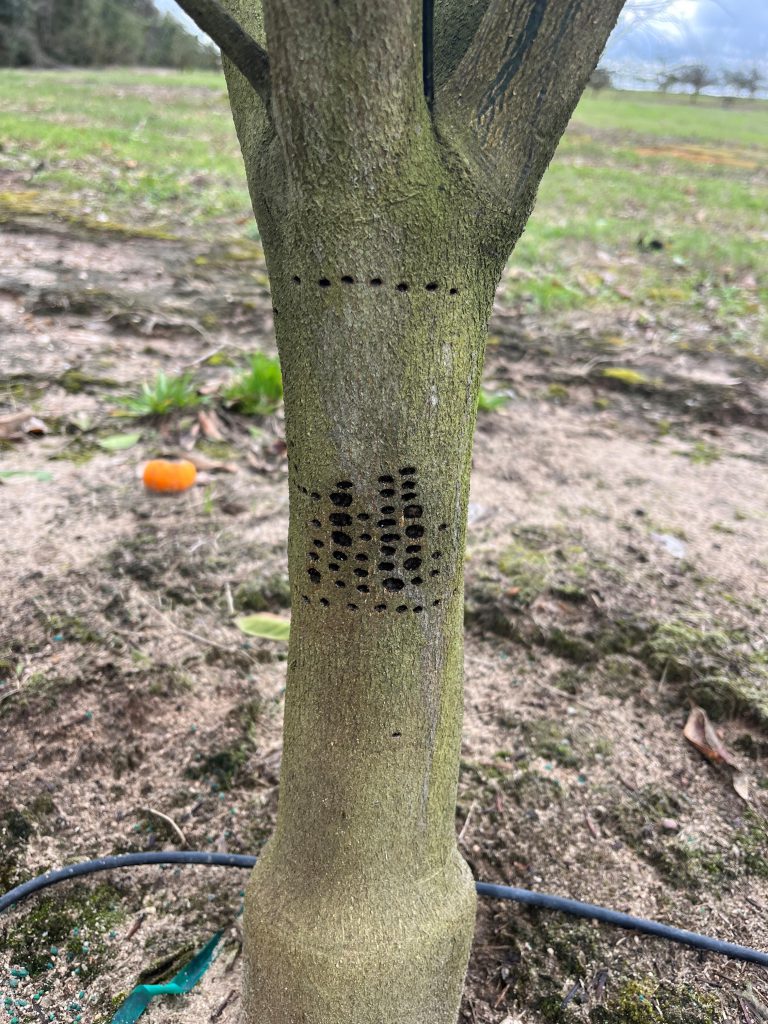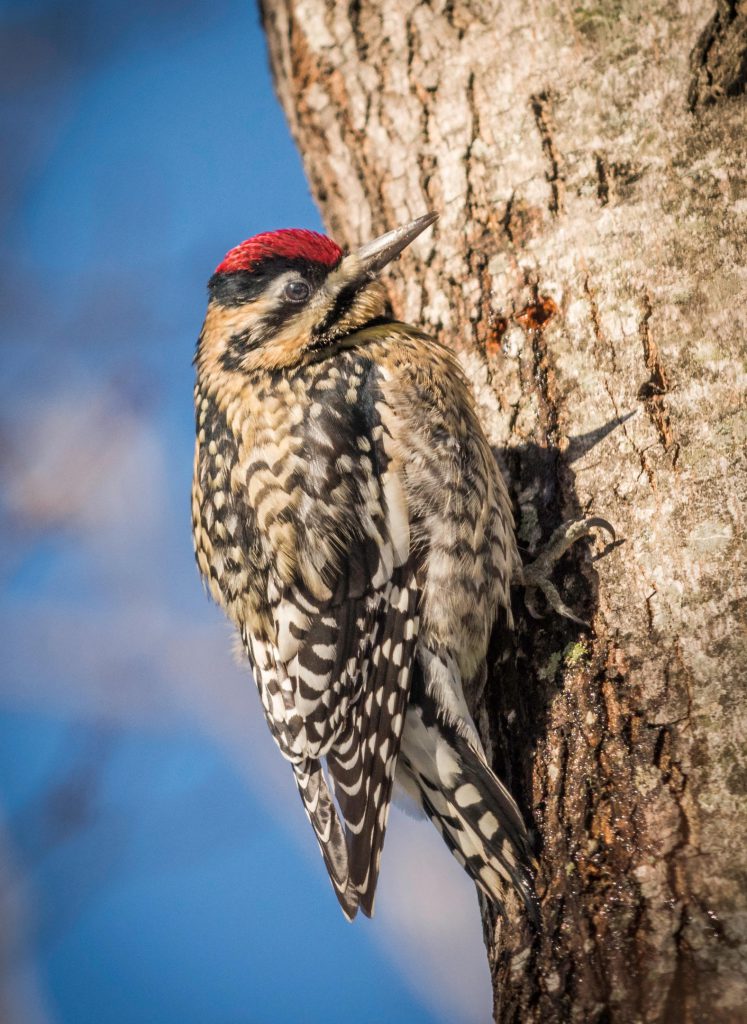
Unique feeding pattern of the yellow-bellied woodpecker on a citrus tree. Credit Danielle Williams, UF/IFAS
While in a grove recently, I noticed a few trees with multiple, horizontal rows of small holes in the bark at the base of the tree. After looking around, it didn’t appear that the trees were sick, stressed, or dying and there didn’t seem to be a pattern associated with which trees had the small holes in the bark. My initial thought was that the holes were caused by an insect, but there was no evidence of insect presence. After digging a little deeper, I found that the injury was caused by a yellow-bellied sapsucker, which is a member of the woodpecker family.
Yellow-bellied sapsuckers are migratory woodpeckers. They are about 7-8 inches in length with a wingspan of 13-16 inches. They are identified by their pale-yellow belly, a black crescent on the breast, white wing stripe, and crimson crown. Yellow-bellied sapsuckers are migratory and usually only found in Florida during the winter months along their migration south.
One of the most unique features of yellow-bellied sapsuckers is their feeding habits. They drill small holes (about 1/4 in inch) in trees with their strong, pointed bills, creating a pattern of neatly spaced rows. These holes serve as a source of sap for the sapsuckers, as well as other birds and insects. The sapsuckers return to these holes repeatedly to feed, and the sap also attracts insects, which the sapsuckers also eat. Sapsuckers are known to feed on more than 250 species of woody plants, with pecan, maple, and hemlock as preferred species.
Yellow-bellied sapsuckers can cause injury to trees by repeated feeding; however, this is rare, and most trees handle feeding injury without significant damage. To discourage sapsuckers from feeding on a favorite tree, hardware cloth or burlap can be wrapped around the area being attacked. Since, yellow-bellied sapsuckers are migratory, they have likely already migrated south now and are not a concern for local growers.
–
For more information, please visit:
Yellow-bellied Sapsucker | Audubon Field Guide
Yellow-bellied Sapsucker Identification, All About Birds, Cornell Lab of Ornithology
- Discover the Sweet Potential of Persimmons at the UF/IFAS Persimmon Field Day – October 23 - September 12, 2025
- 2025 Big Bend Pesticide Safety Training Series – September 8-11 - July 18, 2025
- Mechanical Pruning of Citrus Groves - March 7, 2025

